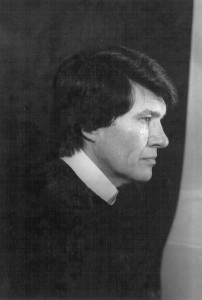
Classes at LSUA are almost at the mid-semester point. For the first time in a number of years, I am again teaching an art structure class. We used to call this class Design, but now it has a fancier title. The purpose of the class is still the same, though—to teach students the various art media in a hands-on environment. I have always enjoyed this class because students are free to be as creative as they are able within the formats of our projects. In the process, they are learning not only about the techniques of art but also about the artists who developed them.
One of our first projects is a photograph based on the technique of Man Ray. Born Emmanuel Radnitsky in 1890, Man Ray was part of the Dada movement in the American avant-garde. He created the earliest airbrush paintings, which he called “aerographs.” In 1915, influenced by his friendship with Alfred Stieglitz, Man Ray took up photography. He invented cameraless photographs, images that he called “rayographs”. Objects were placed on or near sensitized paper and exposed directly to light. He could then move or remove the objects while controlling the exposure. The result produced images of abstract or symbolic character. Each of the students will produce a photograph based on this technique, calling it by their own name…as in a deVilleograph.
Frank Stella (b. 1936) is an American artist who has explored the concept of minimalism in painting. Since the late 1960’s, Stella has constructed paintings of “protractor” shapes. Using brilliant colors, the artist interrelates protractor drawn shapes to create rectangular or diamond effects. The end result is a hard painting of abstract but geometric quality. Stella’s “black paintings” are large vertical black rectangles with areas in which paint has not been laid down, producing white lines. Our students’ projects will reflect the quality of minimalism within a painting.
We will study the concept of flotation and what gives an object the ability to float. Students will create a sculpture out of the material of their choice. The only criteria will be that the sculpture is aesthetically pleasing and can float. When I was an art student I made a large (very large!) clay-fired teacup. The requirement for my project was that a fellow student could get into the teacup and that it would float. I am here teaching, which tells you that it floated! Basically my students are doing the same thing on a much smaller scale. And, of course, we will take them to the lake on campus to see if they indeed do float!
In our project on weight displacement, students will create a package. The finished package will contain an egg. In order to be successful, the package must hold the egg intact when dropped from the second story of a building. The secret to this is the way in which the contents are cradled within the package. For example, if an egg is placed in a star-shaped package it will hit on several points and then roll, thereby cradling the egg without breaking the shell.
We are going to be making a floor covering. Floor coverings were popular in New England during colonial times. Ours will be made of canvas, sealed with a sizer to fill the holes in the fabric, and then painted with acrylic paint. Finally, the canvas will be sealed so that one may walk on it without damaging the paint or the fabric. The covering can then be cleaned with a damp cloth. Artists today still make floor coverings, some from the older methods and some with a more modern technique. In any event, they are quite unique and quite pricey!
Icon painting will be explored from a modern technique. Unlike the ancient encaustic technique of icons such as those from the Monastery of St. Catherine on Mount Sinai, our icons will use a simple technique of painting directly on board. We will explore modern metaphysical figures.
Finally, the students will create a silver point drawing. This technique became popular during the Renaissance when artists mixed Chinese white paint with crushed egg shells and silver. The silver oxidized, resulting in what appeared to be like a brown ink drawing.
Art Structure is a course that combines a great deal of learning with the enjoyment of creating the varied projects, all within a relaxed environment. The end result of these varied projects will be a show in our University Gallery. Both the students and I will exhibit our work. Details on this show will be forthcoming and we invite everyone to attend.
The art structure course will again be offered next fall. It is a general education elective that is open to anyone, both student and community member. Summer school at LSUA will also feature art courses such as FIAR 1001, Introduction to Art Appreciation. All are welcome to take any of the art courses offered on campus. For further information, please contact me at (318) 473-6449 or [email protected].









